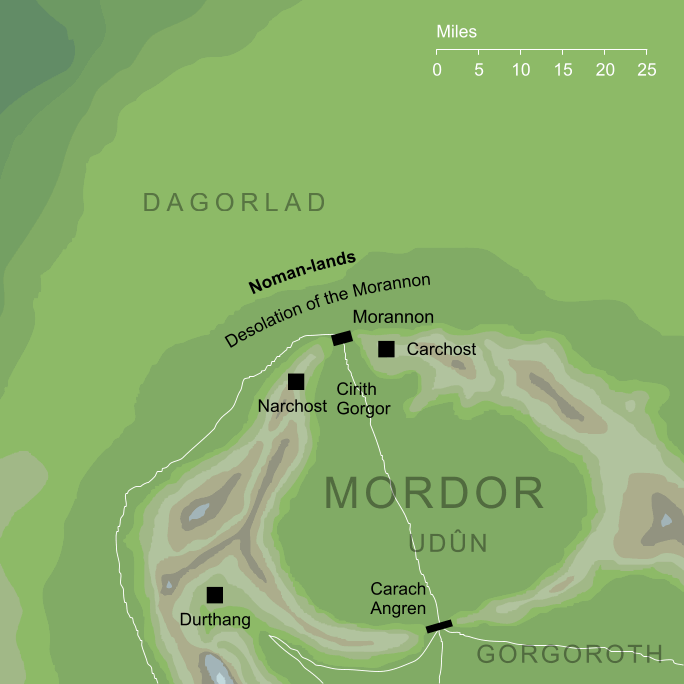- Cities and buildings
- Fields, plains and deserts
- Forests
- Hills and mountains
- Islands and promontories
- Lands, realms and regions
- Rivers and lakes
- Seas and oceans


 |
||||||
|


Which personality type are you?
Take the Free mydiscprofile Personality Test to discover your core personality and your ideal job.   Which personality type are you? |
|
Dates
Location
Race
Associated with the Black Land of Mordor, ruled by Sauron, a Maia; Orcs and Men allied with Sauron passed through this land to enter Mordor
Passes
Meaning
Unclaimed or unoccupied land2
Other names
Indexes: About this entry:
|
Noman-landsThe barren lands outside Mordor’s Black Gate
The name given to a desolate region near the Gates of Mordor, in and around the land where the Battle of Dagorlad had been fought at the end of the Second Age. Even at the end of the Third Age, little grew in this stark land, in which withered peats lay separated by tracts of dried mud. This was an area of low sloping rises that lay between the Dead Marshes to the northwest, and the blasted ash heaps of the Desolation of the Morannon extending out from Mordor's Black Gate. There can be little doubt that Tolkien chose the name 'Noman-lands' to reflect the 'No Man's Land' of the First World War, of which he had personal experience. Indeed, he used the label 'No Man's Land' on early maps for The Lord of the Rings, though the term did not survive into the published book. Unlike the historical 'No Man's Land', however, the Noman-lands of Mordor do not seem to have originated in war. They were said to have been made through the '...dark labour of [Mordor's] slaves...' (The Two Towers IV 2), so they were apparently created intentionally. Notes
Indexes: About this entry:
For acknowledgements and references, see the Disclaimer & Bibliography page. Original content © copyright Mark Fisher 2020, 2024. All rights reserved. For conditions of reuse, see the Site FAQ. Website services kindly sponsored by Axiom Discovery aptitude and skill testing.Personality is one part of understanding a candidate's suitability, but aptitudes and skills are also key. |